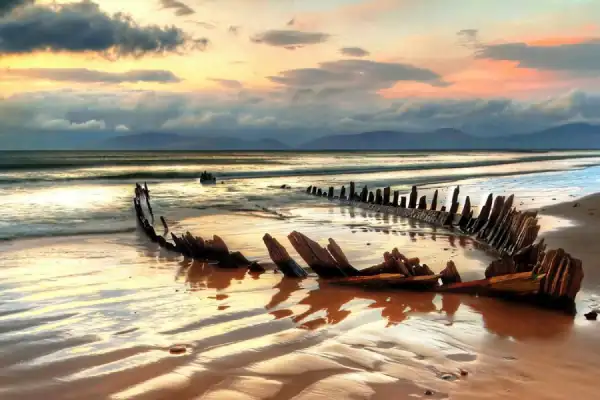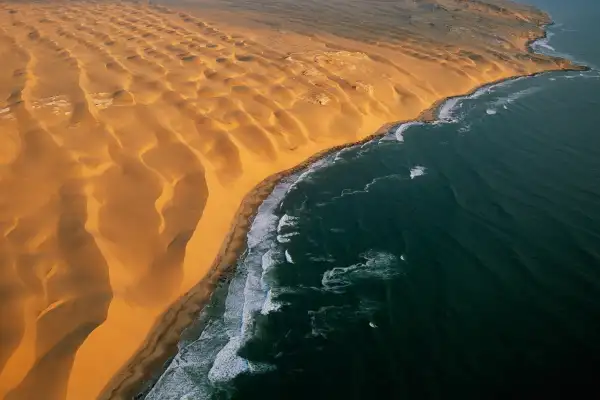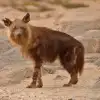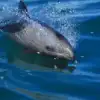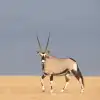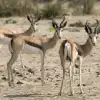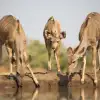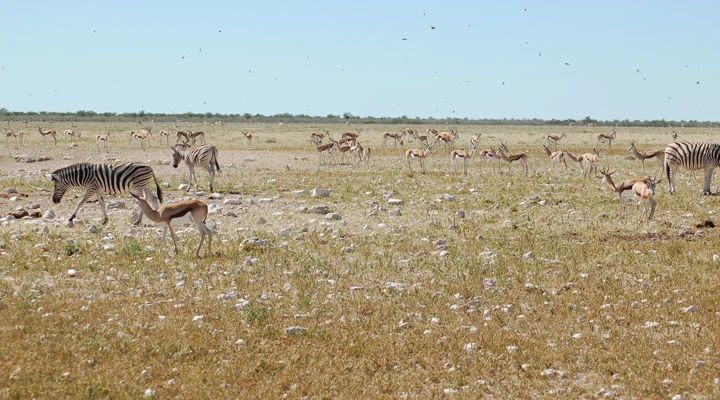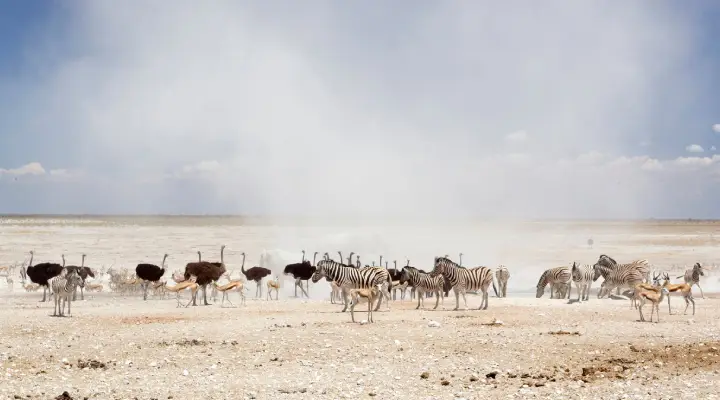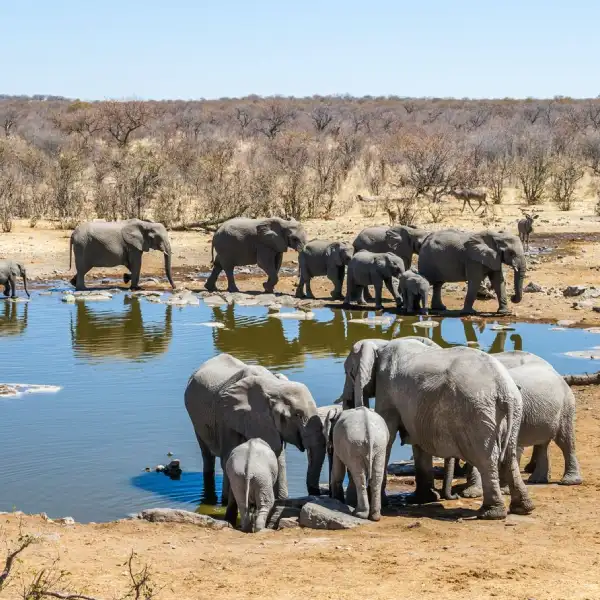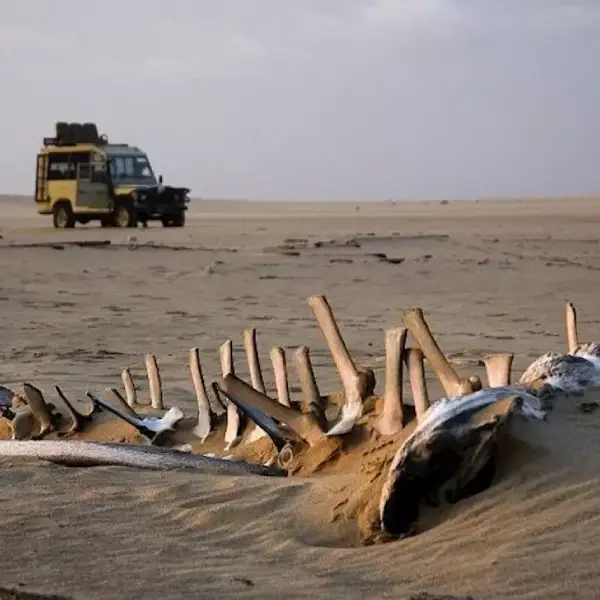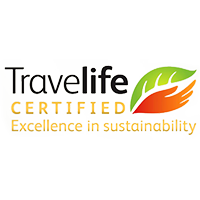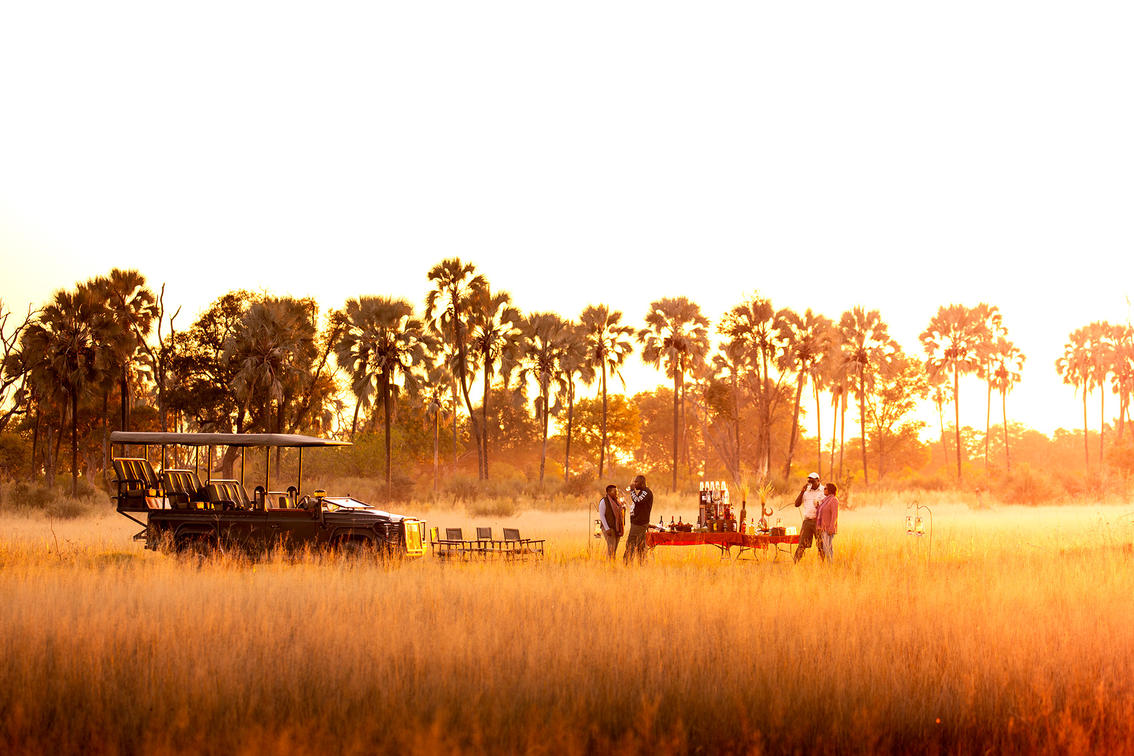January in Namibia is hot and marked by sporadic, heavy rains which may complicate travel, especially in the Zambezi Region.
Despite the lush, green scenery and excellent birdwatching opportunities, including vibrant flamingo sightings, wildlife viewing can be challenging due to thick vegetation.
The increased humidity also raises the malaria risk, making it essential for visitors to take precautions.
February remains the peak of Namibia’s summer, with high temperatures and frequent rainfall, including intense humidity.
This month offers unique wildlife experiences, such as viewing newborn animals during Etosha’s calving season.
Although spotting wildlife can be tricky, the lush landscapes and active birdlife provide ample photography opportunities.
March sees a reduction in rainfall but retains the heat and humidity of summer. Nighttime brings cooler temperatures, making it more comfortable for visitors.
While not ideal for game viewing, the clear skies and vibrant landscape make it a great month for photographers and those interested in exploring Namibia’s lush scenery.
April is a transitional month with decreasing humidity and rainfall, leading to clearer skies and cooler conditions.
It’s an excellent time for photography enthusiasts to capture the stunning clarity and colours of the Namibian landscape.
Wildlife viewing begins to improve as water sources dwindle and animals start frequenting known watering holes.
May marks the beginning of the dry season, offering ideal conditions for wildlife viewing with cooler temperatures and minimal rainfall.
The landscape starts to dry out, making animals more reliant on waterholes, increasing sightings for visitors.
This month is considered the start of the peak safari season, perfect for game drives and experiencing the gathering of diverse wildlife in parks like Etosha.
June brings cold nights and pleasant daytime temperatures, providing comfortable conditions for visitors.
The dry, sparse landscape enhances visibility for game viewing, making it one of the best months to visit.
Wildlife, including large predators and herds of herbivores, can be seen more easily as they congregate around water sources.
July is the driest month, offering excellent wildlife viewing opportunities. The cold weather concentrates animals around waterholes, where visitors can see diverse species in significant numbers.
This month is ideal for those who want to witness the peak of wildlife activity in Namibia’s parks, especially in the renowned Etosha National Park.
August continues with cold nights but sees an increase in daytime tourism due to mild weather. The landscape is dotted with wild spring flowers, enhancing the scenic beauty.
Wildlife viewing remains superb, with clear skies and an abundance of animals visible near water sources. Early booking is advisable as this is a popular time for tourists.
September in Namibia is characterized by warming temperatures and dwindling water sources, which draw wildlife into open, accessible areas.
This month is ideal for game viewing and enjoying the vast, dry landscapes of Namibia.
The pleasant weather and less crowded parks make it a prime time for those seeking both adventure and solitude in nature.
October signals the end of the dry season with warmer weather and the occasional rain shower, which can start to bring the landscape back to life.
It’s the last great month for game viewing before the wet season fully sets in, and also an excellent time for stargazing and enjoying the clear Namibian skies.
The onset of the rainy season in November transforms the landscape, cooling temperatures, and bringing unpredictable weather, including impressive thunderstorms.
This rejuvenation of the land attracts a plethora of bird species, making it a spectacular month for birdwatching, especially around water bodies like Swakopmund, where flamingos gather.
December offers dynamic game viewing opportunities in Etosha National Park with notable sightings of elephants, lions, rhinos, and kudus.
The rainy season welcomes migrant birds, enhancing the birdwatching experience. As the holiday season, this month sees an influx of tourists, so booking in advance is recommended to secure accommodations and safari tours.
Despite the higher visitor numbers, the festive atmosphere and vibrant wildlife activity make December a rewarding time to explore Namibia’s natural wonders.



